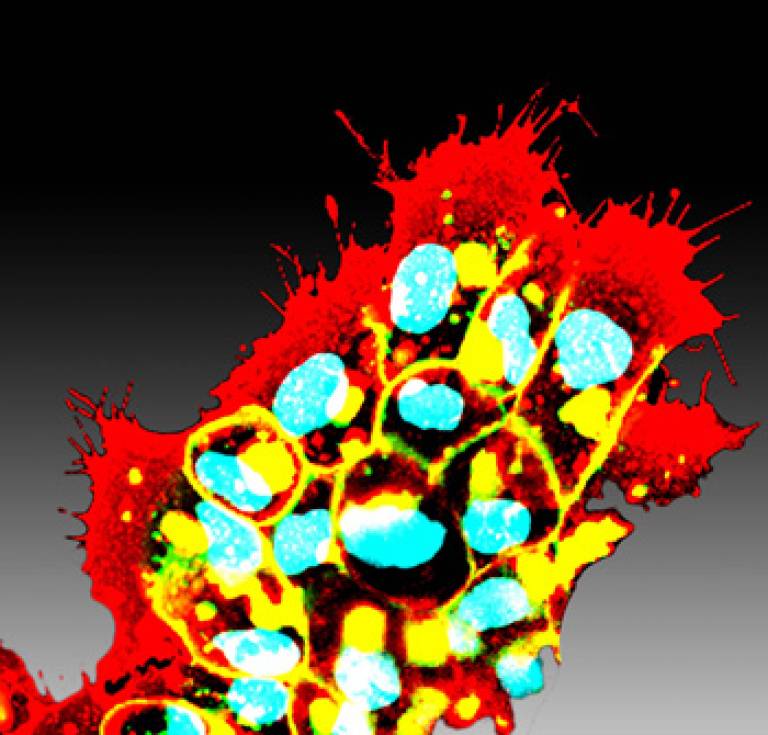Cells' grouping tactic points to new cancer treatments
20 July 2010
Press release Links:
 ucl.ac.uk/cdb" target="_self">UCL Research Department of Cell & Developmental Biology
ucl.ac.uk/cdb" target="_self">UCL Research Department of Cell & Developmental Biology
The
mechanism that cells use to group together and move around the body has been
discovered by scientists at UCL - a finding that has implications for the
development of new cancer treatments.
The study,
which used embryonic cells, points to a new way of treating cancer where
therapy is targeted at the process of cancer cells grouping together. The aim is to stop cancer cells from
spreading and causing secondary tumours.
In order
for cells to migrate they form protrusions - much like oars of a boat - in the
direction that they want to travel. However, if a single cell is isolated it
produces these oars in all directions and ends up rowing in circles. To move around effectively cells must stick
together before attempting to travel.
The study, published today in the journal Developmental Cell, explains how this process works. Scientists have discovered that when cells group together the contact with other cells inhibits the formation of protrusions or 'oars'. This means that protrusions only form on the cells that are on the outside edges of the group, causing the group to move in specific direction as the group is pushed by the outermost 'leader' cells.
Dr Roberto Mayor, UCL Department of Cell and Developmental Biology and lead author of the research, said, "Being able to form a group with neighbour cells is advantageous for migration of embryonic cells as well as cancer cells during tumour metastasis - they have strength in unity.
"The findings suggest an alternative way in which cancer treatments might work in the future if therapies can be targeted at the process of group formation to stop cancer cells from spreading and causing secondary tumours."
The experiments were carried out using neural crest cells, which are found next to the developing central nervous system in embryos. These cells can develop into a huge variety of different kind of cells including heart, face, skin and muscle cells. Scientists blocked surface molecules, proteins called N-cadherin, on the neural crest cells that are involved in forming contacts between cells. When they did this the power of the cells to group together was lost, along with any ability to migrate.
It is expected that inhibition of N-cadherin would have the same the effect in cancer cells, which also move in groups during metastasis.
The work was funded by the Medical Research Council, the Biotechnology and Biological Sciences Research Council and the Wellcome Trust.
Image: Clusters of neural crest cells, where the protrusions can be seen at the border of the cluster
Media contact: Clare Ryan
Related stories:
 Close
Close

